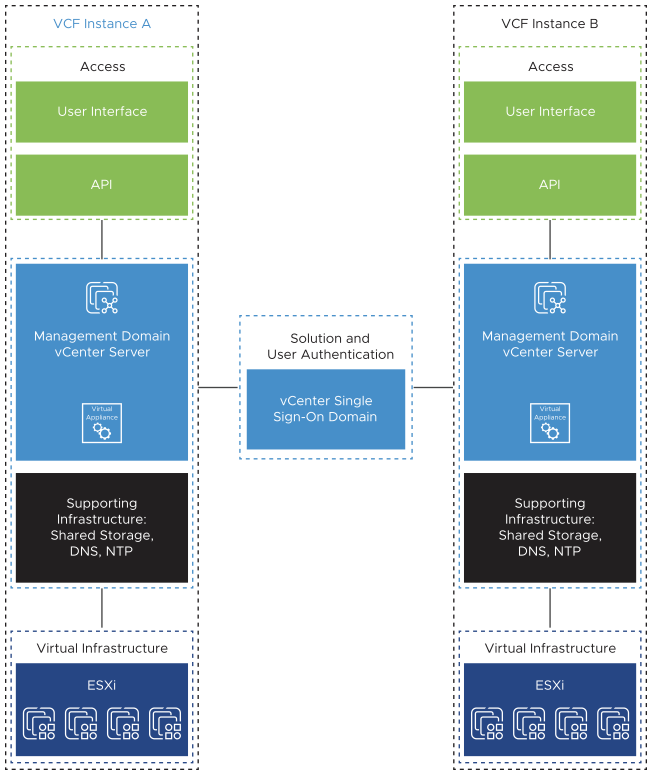For the management domain of each VMware Cloud Foundation instance, you deploy a vCenter Server appliance that manages the ESXi hosts that are running the management components of the SDDC and supports integration with other solutions for monitoring and management of the virtual infrastructure.

Single VMware Cloud Foundation Instance with a Single Availability Zone |
Single Instance with Multiple Availability Zones |
Multiple VMware Cloud Foundation Instances |
|---|---|---|
|
|
|